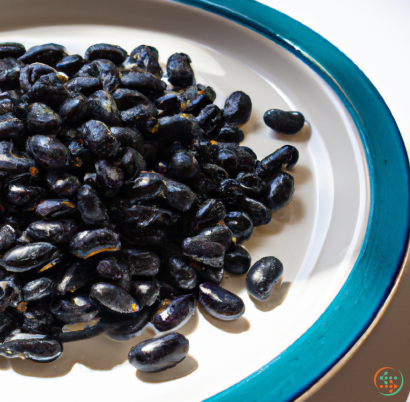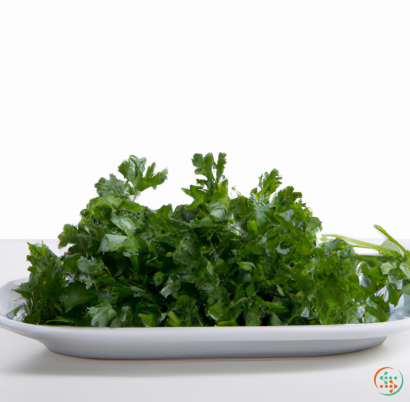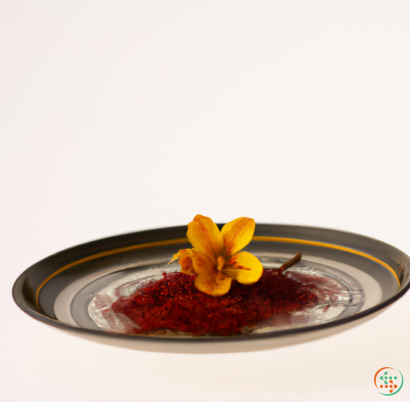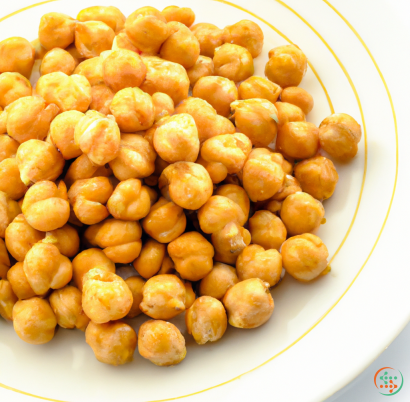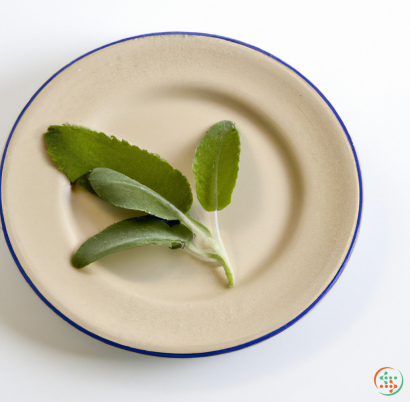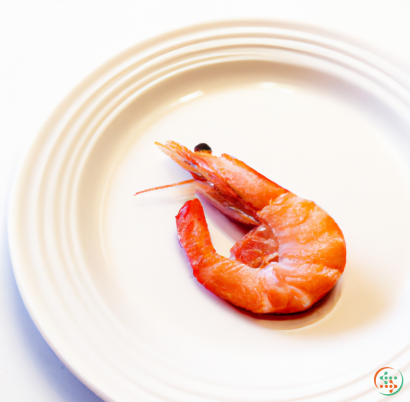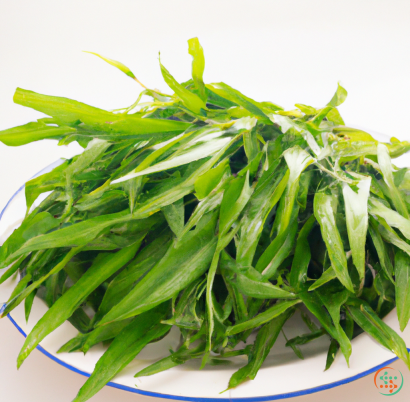Chervil
Welcome to our blog post about chervils! Today, we’re going to talk about what chervil is, where you can find it, and how you can use it. Read on to find out more.
So what is a chervil? chervil (Anthriscus cerefolium) is an annual herbaceous plant in the family Apiaceae. It grows to 20-30 cm tall, with leaves that are fresh, delicate, and divided into several parts. The leaves have a sweet, mild anise-like flavor. Chervil is often used as a garnish or a flavoring in salads, soups, and sauces. It is a part of the fines herbes blend and is one of the four herbs that make up the French classic seasoning bouquet garni.
Chervil is native to western Asia and the Mediterranean region, but it is widely cultivated around the world. The plant is cultivated for its leaves and for its seeds. The leaves of the chervil plant are harvested in late summer or autumn and dried for use later in the year. The dried leaves are often ground into a powder to use as a seasoning. The chervil seed is harvested in the autumn and can be used as a seasoning in its own right.
When choosing chervil, you should look for leaves that are fresh and free from yellowing or wilting. Avoid those that are too wilted, as this indicates that the plant may be past its prime. Dried chervil should be stored in an airtight container in a cool, dark place.
So, now you know what chervil is, but what can you do with it? Well, there are a number of ways to incorporate chervil into your cooking. First of all, it’s great as a garnish. You can sprinkle it on top of a salad or soup, or even on roasted vegetables. It can also be added to pestos and sauces to add flavor.
You can also use chervil to make a refreshing tea. Simply steep a tablespoon of crushed chervil leaves in hot water for about 10 minutes. Strain away the leaves and sweeten with honey or sugar, if desired.
Butcher's Broth is another popular dish that calls for the use of chervil. This hearty soup consists of beef or chicken stock, potatoes, celery, carrots, onions, and of course, chervil. All the ingredients are simmered together until they are cooked through and the soup is ready to serve.
Finally, chervil also makes a wonderful addition to omelets, potato pancakes, and other egg dishes. Simply add a tablespoon of freshly chopped chervil leaves per omelet or pancake.
There you have it – just a few ideas on how to use chervil. As you can see, this delightful herb is quite versatile. Give it a try the next time you’re in the kitchen and you’ll soon discover why it’s so popular in French cuisine. Bon appétit!
When it comes to food, there are few ingredients as essential and cute as chervil. This small member of the parsley family is used in almost every gourmet meal, adding a hint of sweetness and anise-like flavor. In this blog post, we’ll explore how chervil goes from seed to your dinner plate.
A Brief History of Chervil
The word chervil derives from the Latin ‘veneris herba,’ meaning “the herb of Venus,” and it’s been prized since ancient times for its delicate flavor and ornamental presence. For example, ancient Romans used it in salads, while health-minded Greeks enjoyed it just like parsley. Now, in both modern and traditional French cooking, chervil adds a mild and refreshing flavor to countless dishes.
From Seed to Plant
Chervil seeds look quite a bit like small grains of sand, but they can be very tough to get started, so they tend to rely on the special skills of plant professionals. If you’re looking to start a chervil plant, you’ll want to give it a cool start, either outdoors or indoors in early spring.
The best way to start them is to directly sow the seeds into soil that’s between 60-70°F. If it stays too hot, the seeds won’t sprout, but if it’s too cool the plants won’t grow. Soil should be well drained and watered lightly everyday.
In about two weeks, you should see the chervil sprouting, though for maximum flavor and foliage, plan to make sure the plants receive about 5 – 6 hours of sunlight each day. To ensure full growth, use an all-purpose fertilizer 30 days after sprouting.
Harvest Time
You can start harvesting your chervil after three to four weeks of growth, and you should begin picking leaves when they’re 1-2 inches long. For maximum flavor, snip individual leaves, as they will provide more intense flavor than using an entire stalk. If the plant grows too large, you can always prune it back to encourage renewed growth.
At harvest time, your chervil will have a mild and subtle flavor similar to anise with woody undertones. Chervil leaves are extremely delicate, so it’s important to take extra care during harvesting and handling.
Chervil’s Journey to Your Plate
From the garden, chervil makes its way to your kitchen or restaurant in a few different ways. Often it’s grown by local farms, and is found in farmers’ markets near you. You can also buy chevil online or find it fresh in specialty grocery stores.
Once you have your chervil, you can store it for up to three days in the refrigerator. To preserve its flavor and texture, use that bagged salad greens are stored in, or even wrap the chervil in a damp paper towel. The chilled leaves of the chervil should remain fresh and edible for three days.
Cooking With Chervil
Once it’s in the kitchen, cooks enjoy incorporating chervil into dishes like soups, salads, potatoes, and breads. Fresh chervil leaves can also be chopped and used as a garnish on any number of dishes, adding a subtle, refreshing herbs-like bite.
For even more intense flavor, you can lightly wilt chervil in boiling salted water before adding to a dish. If you’re looking to preserve its delicate taste, adding chervil at the end of the cooking process is your best bet.
A Little Note of Caution
Fortunately, it’s highly unlikely to overdose on chervil. But a word of caution: if you’re taking any kind of blood clotting medications, steer clear of chervil as it can act as a blood thinner, amplifying the effects of whatever medication you’re taking.
Conclusion
Few herbs can boast the versatility, delicate flavor and delicate garnish potential of chervil. Its ability to please both chefs and casual eaters, not to mention its unique flavor profile, helps make it one of the hottest culinary ingredients around, from garden to dinner table.
| Vitamin A | 0.293 mg | |
| Vitamin C | 0.05 grams | |
| Vitamin B1 | 0.38 mg | |
| Vitamin B2 | 0.68 mg | |
| Vitamin B3 | 0.0054 grams | |
| Vitamin B6 | 0.93 mg | |
| Vitamin B9 | 0.274 mg |
| Calcium | 1.346 grams |
Daily Value 1.3 g
|
| Iron | 0.03195 grams |
Daily Value 0.018 g
|
| Magnesium | 0.13 grams |
Daily Value 0.4 g
|
| Phosphorus | 0.45 grams |
Daily Value 1.25 g
|
| Potassium | 4.74 grams |
Daily Value 4.7 g
|
| Sodium | 0.083 grams |
Daily Value 2.3 g
|
| Zinc | 0.0088 grams |
Daily Value 0.011 g
|
| Copper | 0.44 mg |
Daily Value 0.9 mg
|
| Manganese | 0.0021 grams |
Daily Value 0.0023 g
|
| Selenium | 0.0293 mg |
Daily Value 0.055 mg
|
| Total Sugars | 0.131141 grams |
per 100g
|
| Palmitic acid (16:0) | 0.17 grams |
|
| Total Saturated fatty acids: | 0.17 g | |
| Oleic acid (18:1) | 1.4 grams |
|
| Total Monounsaturated fatty acids: | 1.4 g | |
| Linoleic acid (18:2) | 1.8 grams |
|
| Total Polyunsaturated fatty acids: | 1.8 g | |

